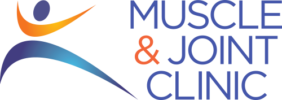Chronic knee pain plagues about one third of people.*
Knee Pain: Why You Get It
You have two types of joints in your body: joints that move in many different directions and joints that move in one direction. Joints that move in just one direction are designed to withstand a substantial load. However, they do not react well when forced to move in any other way. Your knee joint is one such joint.
The knee is designed to move forwards and backwards. For this reason it is known as a hinge joint, just like those found on doors. A door not properly aligned, squeaks. A knee not properly aligned, causes pain.
Knee Pain: The Kinematic Chain
Knees rarely diverge from normal movement on their own. They become painful and broken down as a result of dysfunction in the kinematic chain – the mechanical link between the foot, knee, hip and back (and how the movement of each one affects the other). This breakdown in the kinematic chain usually starts in the feet or the hips – and takes years to show up in the knees.
The body needs a balance between flexibility and strength to function at its optimum level. Consequently, an imbalance of these factors can cause a faulty link in this kinetic chain. Dysfunction in one part of the kinetic chain will ultimately cause problems in other parts of the chain because it is a weight-bearing system. Therefore, detailed assessment of the joints and soft tissues associated with the kinetic chain is necessary to determine the root cause of knee pain.
Knee Pain: Treatment
How Muscle & Joint Clinic treats your knee depends upon the amount and location of dysfunction in the kinematic chain. First, we will use orthopedic tests which will usually determine if anything is torn in your knee. If there isn’t a tear, we then move on to treatment. Scar tissue usually has formed at the site of your pain, which we’ll eliminate through compression therapy (including ART, Graston, therapeutic massage, etc), decompression (cupping), and/or vibration (shockwave) techniques. Furthermore, we may need to do this elsewhere in the kinematic chain to restore balance to the system. Then we’ll remobilize joints the have become stiff due to the dysfunctional muscles since tight muscles equal tight joints. Restoring strength to weakened muscles to get rid of compensation patterns will bring you out of pain and back to the activities that you love.
To schedule an appointment or learn more, call our office at 415-488-5372.
*Source: Gallup-Healthways Well-Being Index (2011)

